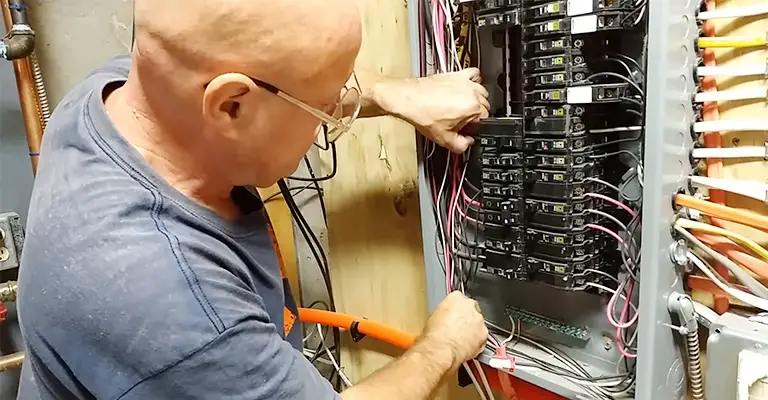Wiring a 30-amp single pole breaker is a fundamental skill for anyone working on electrical projects.
Whether you’re installing a new circuit for an appliance or making modifications to your electrical panel, knowing how to correctly wire a single pole breaker is crucial for safety and functionality.
In this step-by-step guide, we will walk you through the process of wiring a 30-amp single pole breaker safely and efficiently.
30-Amp Single-Pole Circuit Breakers
There is little difference between a 30-amp single-pole circuit breaker and a regular circuit breaker with fewer amps.
The device is designed to cope with a heavier load, which means a higher current up to a maximum of 24-30 amps (or 2,880 watts).
You should use a double-pole breaker for appliances requiring 220-240 volts, not 110-120 volts, which you need a single-pole breaker for.
In addition, it should only be fitted to circuits with at least 10-gauge (10/2) wiring (8 gauge for long distances). If you want to replace a circuit breaker with less amps, you shouldn’t use it on circuits with thinner wires.
A Step-by-Step Guide: How to Wire a 30-Amp Single Pole Breaker
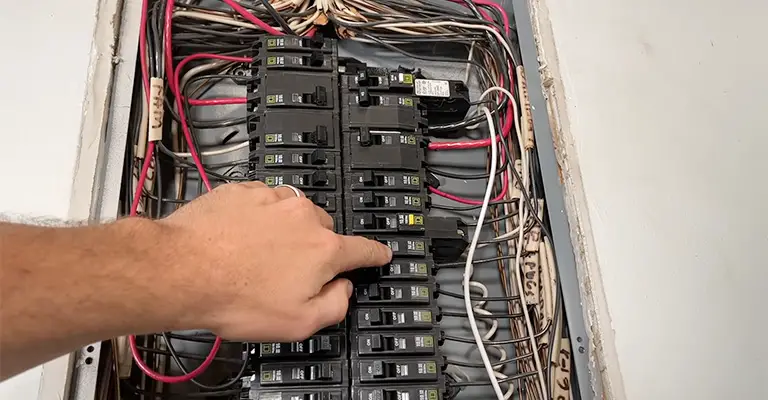
The purpose of this article is to show you how to wire a 30-amp single-pole circuit breaker. Circuit breakers with 30-amp ratings are usually double poles.
Alternatively, it is available as a single-pole breaker for a 110-volt circuit with a 10/2 supply. Circuit breakers with 15- and 20-amp capacities are wired in a similar manner.
In order to wire a regular 30-amp single-pole circuit breaker, the bare wire is connected to the grounding bar, the white wire is connected to the neutral bar, and the hot wire is connected directly to the breaker.
When dealing with GFCI or AFCI circuit breakers, the white wire should make contact with the panel’s silver terminal, the black wire should make contact with the brass terminal, and the bare wire should make contact with the panel’s ground terminal.
Step 1: Safety First
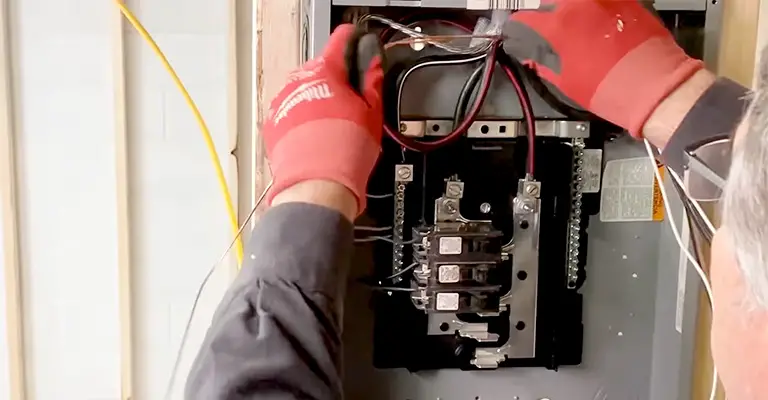
Before you start any electrical work, ensure your safety by turning off the main power supply to the circuit breaker panel.
Use appropriate personal protective equipment (PPE), such as safety goggles and insulated gloves, to protect yourself from potential electrical hazards.
Step 2: Gather Your Tools and Materials
You’ll need the following tools and materials for this project:
- 30-amp single pole circuit breaker
- Wire of the appropriate gauge for your application (usually 10 or 12-gauge for a 30-amp circuit)
- Wire strippers
- Screwdriver
- Voltage tester
- Cable clamps (if required)
- Wire connectors
Step 3: Identify the Circuit
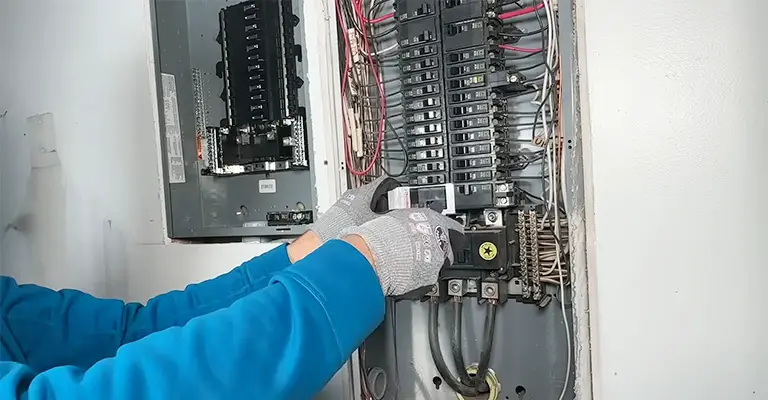
Determine the circuit you want to connect to the 30-amp breaker. This could be for an appliance, outlet, or other electrical device. Make sure the load on this circuit does not exceed 30 amps.
Step 4: Turn Off the Power
Ensure that the main power to your electrical panel is turned off. Verify this using a voltage tester to confirm there is no electricity flowing through the circuits you will be working on.
Step 5: Choose an Appropriate Location
Locate an available slot in the breaker panel where you can install the 30-amp single pole breaker. Make sure the breaker is the correct size for the panel and the load you intend to connect.
Step 6: Prepare the Wires
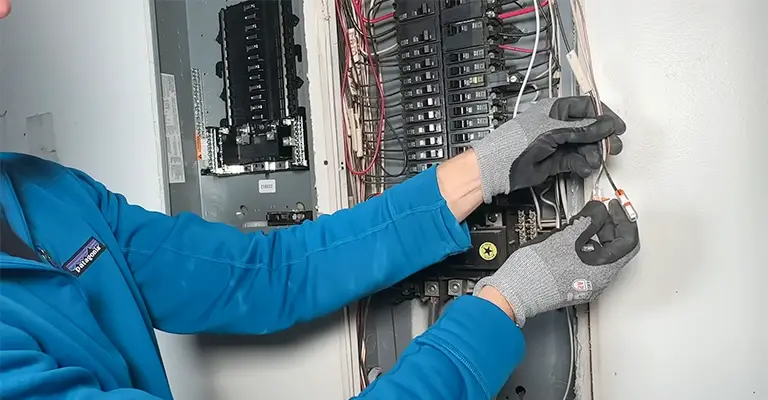
Strip the insulation from the ends of the wires that will connect to the breaker. The length of the exposed wire should match the distance between the breaker terminal and the wire lug.
Step 7: Connect the Wires
Connect one end of the wire to the terminal on the 30-amp single pole breaker. Tighten the screw securely to ensure a good connection. If you’re using stranded wire, consider using wire connectors for added security.
Step 8: Install the Breaker
Slide the breaker into the chosen slot in the electrical panel until it snaps securely in place. Make sure the breaker is in the “off” position before installation.
Step 9: Connect the Other End of the Wire
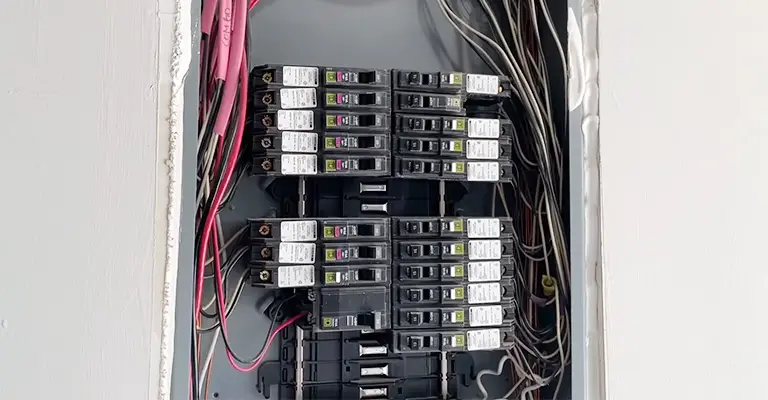
Route the other end of the wire to the device or outlet you’re powering. Secure it with cable clamps if necessary and make the appropriate connections, following the manufacturer’s instructions for your device.
Step 10: Test Your Work
Turn on the main power supply and switch the breaker to the “on” position. Use a voltage tester to ensure that the circuit is functioning correctly and that there are no issues with the wiring.
Frequently Asked Questions
1. What Is The Purpose Of A 30-Amp Single Pole Breaker?
A 30-amp single pole breaker is used to protect a specific electrical circuit in your home, typically for devices or appliances that require 30 amps of current or less. It ensures that the circuit doesn’t overload and cause electrical hazards.
2. Can I Use A 30-Amp Breaker For Any Circuit?
No, it’s essential to match the breaker’s amperage with the specific requirements of the circuit and the device/appliance you’re connecting. Using the wrong amperage breaker can lead to safety issues.
3. What Gauge Of Wire Should I Use With A 30-Amp Breaker?
Generally, you should use 10-gauge wire for a 30-amp circuit. However, for shorter runs, you may use 12-gauge wire. Always check local electrical codes and the device’s manufacturer recommendations for the correct wire size.
4. How Do I Know Which Slot In The Breaker Panel To Install The 30-Amp Breaker?
Choose an available slot in the electrical panel that matches the size of your breaker and is appropriate for the circuit you’re installing. Consult the panel’s labeling or a professional electrician if you’re uncertain.
5. Is It Necessary To Turn Off The Main Power Supply Before Working On The Breaker Panel?
Absolutely. Safety should be your top priority. Always switch off the main power supply to the panel and verify that there is no electricity flowing through the circuits you’ll be working on using a voltage tester.
6. Can I Use Wire Connectors With Stranded Wire For A Secure Connection To The Breaker?
Yes, using wire connectors with stranded wire can provide a more secure and reliable connection to the breaker terminal. It’s a good practice, especially if you’re working with stranded wires.
7. Are There Any Specific Safety Precautions I Should Take When Working With Electrical Circuits And Breakers?
Yes, besides turning off the power, wear appropriate personal protective equipment (PPE), like safety goggles and insulated gloves. Follow all local electrical codes and regulations, and if you’re unsure about any aspect, consult a licensed electrician for guidance.
8. What Should I Do If I Encounter Difficulties Or Problems During The Installation Process?
If you encounter any issues or have doubts about the installation, it’s advisable to stop and seek the assistance of a qualified electrician. Electrical work should always be done safely and in compliance with local codes.
Final Words
You can run many high-power devices by knowing how to install a 30 amp breaker. Installing breakers properly will ensure safe delivery of electricity, whether you’re using a dryer or charging an RV.

